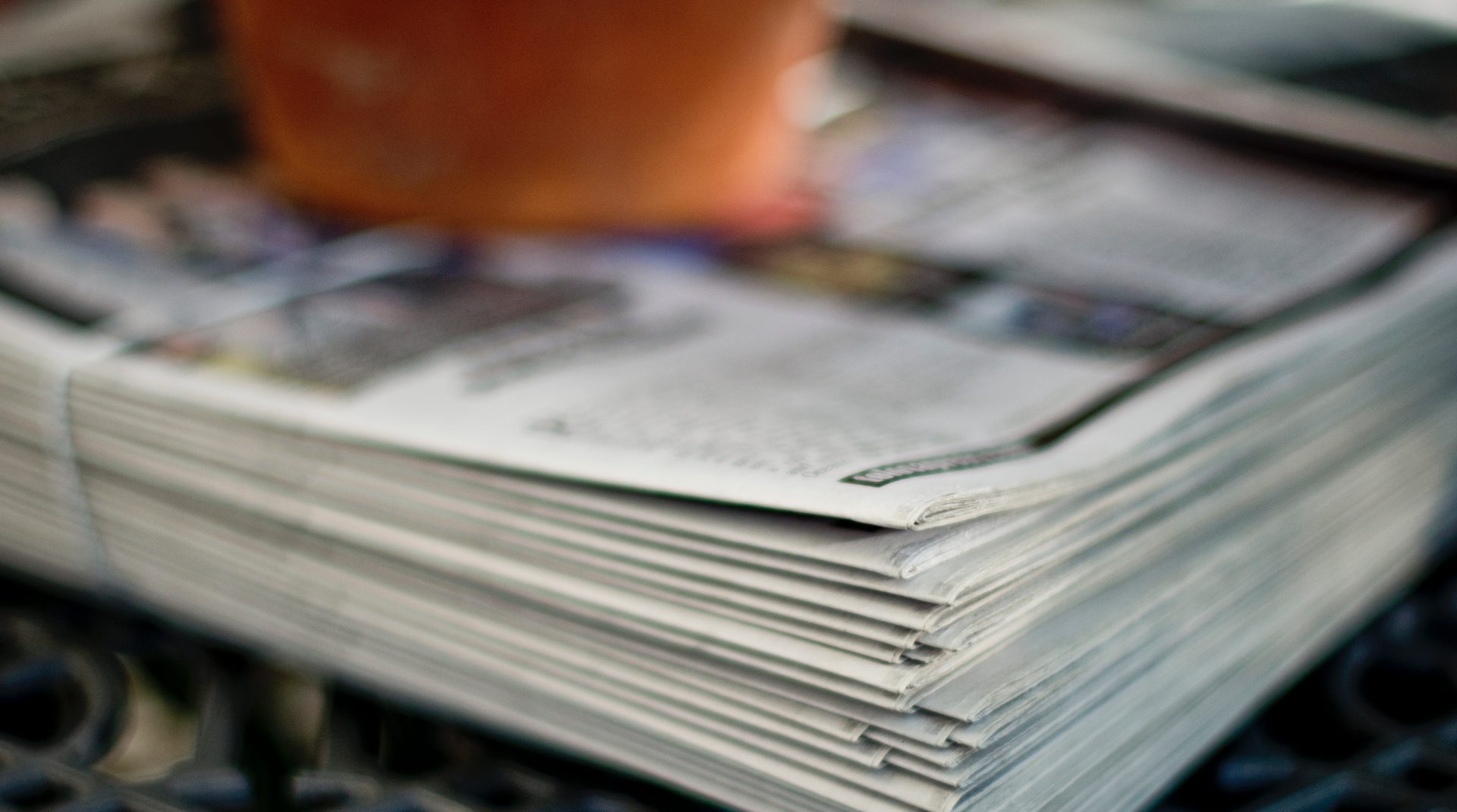
Newsletter
Newsletter
A local newsletter network and a traditional publisher that revamped its model are bringing hope for renewal in local media.
30th March 2023

In the Pugpig weekly media bulletin, Pugpig’s consulting services director Kevin Anderson and digital growth consultant James Kember distill some of the best strategies and tactics that are driving growth in audiences, revenue and innovation at media businesses around the world.
While some local news publishers are finding success, media watchers have been sounding the alarm about a growing sense of crisis in local journalism in both the US and the UK. While national titles like the New York Times in the US and The Times and Independent in the UK have had success to converting their audience and their business models to digital, local news publishers have struggled. As Douglas McCabe of Enders Analysis told The Guardian, print volumes for local publishers are down 65% over the last decade, and that part of the business is becoming less of a revenue generator than a costly millstone around their necks. And the inflationary pressures on the print business in the last year have not helped. On the digital side, local publishers have not been able to translate large digital audiences into enough revenue to offset print revenue declines. The result is that more than 300 local newspapers have shut in the UK over last decade, The Guardian reported, and since 2005 in the US, a quarter of all newspapers have closed – some 2,500 newspapers, according to the New York Times. For those left, the fight for survival leads is leading to less coverage and poor products. Media analysts like Esther Kezia Thorpe and Simon Owens have taken publishers to task for trading good user experience for ad-heavy sites in an effort to maximise digital ad revenue.
Sign up to get the Media Bulletin in your inbox.
As grim as these losses have been, there are signs of renewal and innovation including just out-of-stealth projects like News Oasis, which aims to green news deserts. The models are overwhelmingly digital, and while they might start small, some are already growing to a scale where they could challenge not just legacy news publishers but even some of the projects from established digital players like Axios. In the same piece that Simon takes the big chain publishers to task, he highlights the characteristics of local publishing models that are working based on responses that he received from “entrepreneurs who are running successful local news organizations”. They are:
And for a lot of smaller communities, this might be the right size for the business. Many of these digital network players are targeting communities and counties with 50,000 people or more, which leaves a lot of the table. We asked Google’s Bard how many US counties have less than 50,000 people, and it told us, “There are 2,120 US counties with a population less than 50,000 people. This represents about 63% of all US counties.” We took a quick look at US Census data, and this is consistent with what Bard said. For another data point, in 2019, there are 18,723 towns and villages under 50,000 people in the US, according to Statista. That leaves a lot of smaller communities outside of the new models, which means that local people passionate about their communities will be the ones who provide news for their neighbours.
However, zooming out to the new local journalism providers targeting cities above that critical 50,000 people threshold, let’s take a look at newsletter network 6AM City. Andy Griffiths of Champion Newsletters did a deep dive with them, and the fascinating interview covers issues such as their go-to-market strategy, tech stack and their content model, which includes lifestyle and explainer journalism but not investigations.
They have already launched in 25 cities, and their plan is to ramp up to another 50. They have a cost of acquisition of $1 per subscriber and a target lifetime value of $25. Their goal is 100,000 subscribers in a target community delivering an annual revenue target of $1m per city. Ok, their financial KPIs are clear. What’s fascinating is how they choose markets. Apart from community size and whether the demographics fit their model, they also look at a few other variables such as the strength of the market and “how actively engaged people are in their community”. To measure the strength of their target markets, they look at “inflows and outflows of people”, which measure whether the communities are growing or shrinking, and retail spending. To measure community engagement, they measure charitable giving per capita.
In our State of the Digital Publishing Market report, we tried to gauge whether publishers were more inclined to buy or build (their own) technology, and 6AM City definitely has a point of view on that. “We spent thousands of dollars on something that we were developing, and ultimately threw in the trash after 3 months, because it wasn’t going to be worth it,” said Ryan Heafy, 6AM City co-founder and chief operating officer. To scale as they are doing, they have found that it is better to buy technology solutions that integrate well with each other.
Once they identify a market, their launch process is classic relationship marketing. Their VP of Expansion and their growth team “establish relationships with the city, local chamber of commerce, downtown association partnerships, children’s theatres, places we know our audience is heavily involved,” Heafy said. They launch with 10,000 to 20,000 subscribers due to these partnerships. It’s a great base to build on, and they use paid social and “similar tools” to grow their subscriber base. For their organically acquired users, they say that they stay with the newsletters for 24 months or more.
While they initially targeting 50 markets, they have have identified more than 150 communities as expansion opportunities. It’s clear that opportunities still exist in local journalism. Their services might not look like the newspapers of old, but they are providing a service for these communities, and digital innovators are leading the way.
However, digital start-ups are not the only ones innovating. Some old dogs of traditional media are also learning new tricks. DC Thomson has grown paid digital subscribers to over 25,000. They’ve done this by adopting a digital-first approach, focusing on higher value content, local issues and investing in their teams. This has required big changes in how they operate and runs contrary to the prevailing approach by local news’ biggest players of cutting costs by cutting staff and challenges the belief that subscription revenue will never remove the reliance on page-view driven advertising.
DC Thomson’s titles have restructured their newsroom and centralised teams through a drive to focus on specific content related areas, rather than geographies. They’ve combined Dundee’s Courier and Evening Telegraph into a single website as well as Aberdeen’s Press & Journal and Evening Express. This has allowed them to create a live news team and a crime and courts team as well as bring in other specialists focused on local politics, food and drink, schools, family and obituaries. They’ve also explored new content types through an “impact” team whose work includes slower-paced pieces like investigative documentaries, which have been a hit with readers.
They’ve had to rethink their staffing needs and have hired people who can help the business understand what content is engaging their audience. They’ve created audience development roles and up-skilled existing staff whose background was in a traditional media organisation. The result are newsrooms that understand what content users are interested in and have the skill to explore new media formats, such as podcasts.
The second shift has been to avoid content that generates clicks but not deeper engagement. Whilst some local news outlets have sought to plug the leaky advertising bucket by driving high volumes of traffic, DC Thomson’s titles established a value framework to allow them to understand if an article was actually being read. They did this through a “quality reads” metric, which identifies how much of an article has been read by measuring scroll depth, mouse movement and average reading time – rather than the number of clicks it’s generated.
But despite all the changes, the DC Thomson has also invested in their print business. They recently redesigned their Saturday print edition to include more content and developed prominent bundle subscriptions offered via their websites. This is combined with a reasonable pricing model of £5.99 monthly for digital only and £19.99 for print and digital.
Overall, by establishing a framework that encourages high quality, relevant digital content that resonates with local audiences, DC Thomson is showing the industry the path forward for local news. They’ve targeted 75,000 paying digital subscribers by 2025 and are one third of the way to their goal. But on their current trajectory, they are showing that traditional local media can adapt and find new models that meet audiences’ needs.
At Pugpig building great products for publishers is what we do. Our Consulting Services team is helping our publishing partners get the most out of their product on our platforms with support on product development and optimisation that leverage strategies that build loyalty and habit leading to increased revenue. If you would like to discuss how we can help you, contact us at info@pugpig.com.
Here are some of the most important headlines about the business of news and publishing as well as strategies and tactics in product management, analytics and audience engagement.

Newsletter

Newsletter

Newsletter

Newsletter

Newsletter